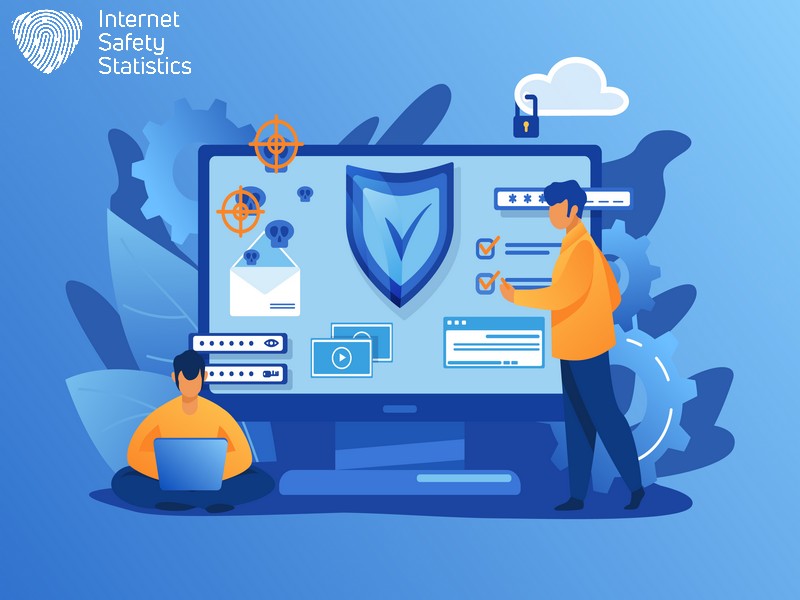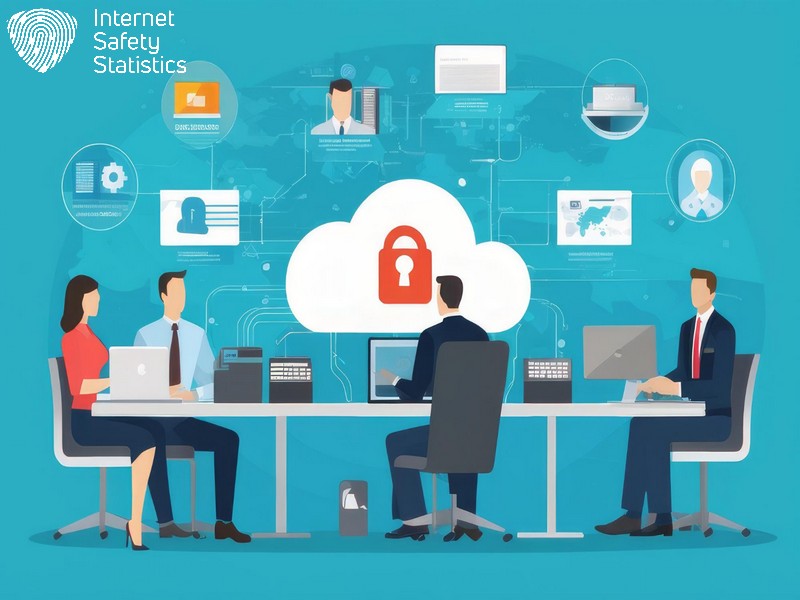
The digital workplace revolves around data, but employee privacy remains a top priority. Beyond ethical considerations, robust data privacy practices are essential for maintaining a positive company culture and reputation. This guide explores best practices for safeguarding employee data in the workplace. We’ll delve into measures to ensure responsible data collection, storage, and access while empowering employees with a clear understanding of their privacy rights within the digital work environment. By prioritising data privacy, you can foster a workplace environment built on trust and transparency.
Dive in for expert advice on safeguarding sensitive information!
Understanding Data Privacy in the Workplace
Personal information in the workplace includes any data that can identify an individual, such as their name, contact details, and financial or health records. Prioritising data privacy in the workplace is crucial to protecting employees from potential cybersecurity threats and maintaining confidentiality.
What is Considered Personal Information
Personal information includes any data that can identify an individual, such as their name, address, email, phone number, or identification number. It also covers more sensitive details like bank account numbers, credit card information, and National Insurance numbers. This type of data must be safeguarded because, if mishandled, it can reveal a person’s identity and lead to privacy invasions.
Organisations handle various employee documents that contain personal information, ranging from CVs to contracts and performance evaluations. Protecting this personal information is crucial as it helps prevent identity theft and maintains trust within the workplace.
Best practices suggest limiting access to such sensitive information following the Principle of Least Privilege – ensuring employees only have access to the data necessary for their job roles. Strong cybersecurity measures like encryption are vital in securing personal data against unauthorised access or disclosure.
Importance of Data Privacy in the Workplace
Understanding what constitutes personal information is crucial for recognising the importance of data privacy in the workplace. Implementing robust data protection measures, such as encrypting sensitive employee data and establishing access controls, is vital to safeguard against potential breaches.
By staying compliant with data privacy laws and continually reviewing and updating policies, businesses can create a culture of awareness that prioritises employee privacy. Additionally, regularly providing employee training on cybersecurity policies and best practices will further strengthen the overall defence against potential security incidents.
To enhance data privacy in the workplace, employees must be aware of phishing attempts and only use secure networks when accessing company files. Implementing good password management practices is critical in ensuring comprehensive data protection.
Limiting access to customer data based on employee roles contributes significantly to safeguarding sensitive information effectively. Furthermore, being prepared for security incidents by implementing security policies and appointing a dedicated data security officer helps mitigate risks associated with unauthorised access or breaches.
Best Practices for Protecting Employee Data

Establish access controls to limit employee data access only to those who need it, encrypt all company data for added protection, regularly back up data to prevent loss, and secure mobile devices with password protections to protect your employees’ data.
Establish Access Controls
Establishing access controls encompasses limiting access to vital information in the workplace. You give access permission to authorised personnel only to avoid leaking any data. This principle also includes using verification steps to validate the user’s personality before giving them access.
- Use role-based access control to limit employees’ access to only the data and systems necessary for their roles.
- Implement multi-factor authentication to add an extra layer of security beyond just passwords.
- Regularly review and update user permissions to ensure only authorised individuals can access sensitive data.
- Utilise strong password policies and enforce regular password changes to enhance security.
- Consider implementing biometric authentication methods like fingerprint or facial recognition for added security measures.
- Restrict physical access to servers and other devices that store sensitive data using secure locks and limited key distribution.
- Monitor and log all user activity to track who accessed what information and when enabling quick identification of any unauthorised activity.
- Encryption techniques protect the data if unauthorised individuals access the system or network.
- Train employees on best practices for accessing and handling sensitive information to minimise the risk of accidental exposure or misuse.
Encrypt All Company Data
Encrypting all company data is crucial to protecting sensitive information. This process secures the data by converting it into unreadable code without the correct decryption key. By implementing robust encryption measures, you can safeguard personal information and ensure compliance with data privacy regulations. Encryption adds an extra layer of security, making it significantly more challenging for unauthorised individuals to access or exploit sensitive company data.
Encryption protocols strengthen your organisation’s overall data protection posture while mitigating the risk of potential breaches or cyber-attacks. They also demonstrate your commitment to upholding stringent privacy standards and safeguarding against unauthorised access to confidential employee and customer information.
Regularly Back Up Data
To enhance data privacy in the workplace, it is crucial to back up data regularly. This ensures that important information is not lost in a security breach or system failure. Here are key practices for backing up data:
- Schedule frequent automatic backups of all company data to a secure and off-site location.
- Implement a data retention policy to determine how long different types of data should be stored and backed up.
- Utilise cloud storage solutions for backup purposes, ensuring the provider complies with relevant data privacy laws.
- Test the restore process regularly to confirm that the backed-up data can be recovered effectively in an emergency.
- Encrypt all backed-up data to prevent unauthorised access and ensure its confidentiality.
- Include employee personal devices, if used for work purposes, in the backup policy to protect all sensitive company information.
- Ensure backups are performed across different media or storage devices to decrease the risk of a single point of failure.
- Train employees on the importance of regular backups and how they can contribute to maintaining data privacy in the workplace.
Secure Mobile Devices
To enhance data privacy in the workplace, it is crucial to secure mobile devices effectively. This includes:
- Enforcing strong password protection and biometric authentication measures on all mobile devices used for work purposes, such as smartphones and tablets, to prevent unauthorised access to sensitive company information.
- Implementing remote wiping capabilities on all company-issued mobile devices ensures that data can be erased remotely to prevent unauthorised access if a device is lost or stolen.
- Installing and regularly updating security software and applications on mobile devices to protect against malware, viruses, and other cybersecurity threats.
- Educating employees about the risks of using unsecured public Wi-Fi networks and providing guidelines for connecting securely when accessing company data on mobile devices.
- Restricting the types of apps installed on company-issued mobile devices to minimise the risk of downloading malicious software or exposing sensitive data.
- Conduct security audits regularly and monitor mobile device network activity to detect potential security breaches or unauthorised access attempts.
Maintaining Data Security
Install anti-malware software, conduct regular security audits, and monitor network activity to protect sensitive employee data. Read more about the best practices for data privacy in the workplace to safeguard personal information from potential threats.
Installing Anti-Malware Software
Installing anti-malware software is crucial to protect your workplace data from malicious attacks. The software helps to detect and remove all forms of malware, including viruses, spyware, and ransomware. Here’s how it works in enhancing data privacy:
- Scans and removes existing malware on devices: Anti-malware software scans the entire system for any malicious programs or files and removes them to prevent further damage.
- Real-time protection against malware: It continuously monitors all incoming and outgoing traffic to block potential malware threats before they can infiltrate the system.
- Regular updates for new threats: Anti-malware software receives regular updates to ensure it can identify and protect against the latest malware that may pose a risk to your workplace data.
- Customisable scanning options: It allows you to schedule automatic scans at convenient times while providing the flexibility to perform quick or full system scans as needed.
- Safe browsing protection: By blocking access to malicious websites and phishing attempts, anti-malware software helps employees avoid inadvertently downloading malware while browsing the internet.
- Email scanning for malicious attachments: It includes email scanning features that identify and quarantine any malicious attachments in emails, protecting your workplace data from phishing attempts via email.
Conducting Regular Security Audits
Ensuring data security requires the regular assessment and testing of systems and processes. This includes conducting regular security audits. Here are some key points to consider:
- Schedule periodic security audits to identify vulnerabilities and areas for improvement.
- Evaluate the effectiveness of existing security measures in place.
- Engage professional cybersecurity experts or employ specialised tools to conduct comprehensive security assessments.
- Review and update security protocols based on audit findings to address identified weaknesses.
- Ensure that all systems, software, and applications are up-to-date with the latest security patches and updates.
- Monitor network activity closely to detect any anomalies or potential security breaches.
- Train IT staff and employees on recognising and responding to potential security risks identified during audits.
- Develop a process for swift remediation of identified threats or vulnerabilities as part of the regular audit cycle.
- Document findings from each audit to track progress over time and inform future security strategies.
Monitoring Network Activity
Regularly monitoring network activity is crucial in maintaining data security in the workplace. It involves monitoring the flow of information across your company’s networks, looking for any unusual or unauthorised activities that could threaten data privacy.
By implementing this practice, businesses can promptly identify and address potential security breaches, ensuring the protection of employee and customer data.
Monitoring network activity also helps detect suspicious attempts to access sensitive information or phishing attacks to steal personal data. This proactive approach is pivotal in safeguarding against cybersecurity threats and maintaining a secure work environment.
Preparing for Security Incidents

Implementing security policies and appointing a data security officer are crucial steps in preparing for potential security incidents in the workplace. Being proactive and having a plan in place can help mitigate the impact of any data breaches or cyber-attacks.
Implementing Security Policies
Implementing robust security policies is crucial to maintaining data privacy in the workplace. Here are some key measures to consider:
- Establish clear and comprehensive security policies that outline data protection guidelines and procedures.
- Communicate these policies to all employees and ensure they understand their responsibilities in upholding data security.
- Regularly update and review security policies to adapt to threats and compliance requirements.
- Provide ongoing training to ensure employees know the latest security protocols and best practices.
Appointing a Data Security Officer
Appointing a data security officer is crucial to ensuring that all sensitive information within the workplace is adequately protected. This individual plays a pivotal role in implementing and overseeing data protection policies, conducting regular security audits, and monitoring network activity to identify potential threats or vulnerabilities.
By appointing a dedicated data security officer, businesses can actively work towards safeguarding employee and customer personal information from unauthorised access or breaches.
Furthermore, the presence of a data security officer also helps prepare for potential security incidents by proactively identifying weaknesses in the existing security systems and establishing robust incident response plans. With their expertise, they can guide employees on best practices for data privacy compliance, thereby building awareness and enhancing overall workplace privacy protocols.
Being Prepared for Security Incidents
After appointing a data security officer, preparing for security incidents is crucial. Implement these measures to enhance workplace data privacy:
- Develop an incident response plan that outlines the steps to take during a security breach.
- Conduct regular practice drills to ensure all employees know their roles during a security incident.
- Establish clear communication channels for promptly reporting any suspicious activities or potential breaches.
- Ensure that all employees know the proper protocols and procedures to follow in case of a security incident.
- Keep external contacts for cybersecurity experts and legal counsel readily available for immediate assistance.
- Regularly review and update the incident response plan based on evolving threats and lessons learned from past incidents.
Building Data Privacy Awareness in the Workplace
Providing employee training and regularly reviewing and updating policies are essential for building data privacy awareness in the workplace. Compliance with data privacy laws is also crucial for maintaining a secure work environment.
Providing Employee Training
Employee training on data privacy best practices is essential for ensuring a secure workplace environment. It is important to equip employees with the necessary knowledge and skills to recognise potential security threats and protect sensitive information.
- Educate employees on identifying phishing attempts, including suspicious emails, links, and attachments.
- Train staff on the importance of using strong passwords and authentication measures to safeguard company data.
- Conduct regular workshops or seminars to update employees on the latest data privacy laws and regulations.
- Provide guidelines for secure use of company networks and devices, emphasising the risks associated with unvetted networks.
- Offer practical scenarios and examples to illustrate personal information breaches’ impact and potential consequences.
- Reinforce the practice of reading and understanding data protection and privacy policies through interactive sessions and case studies.
- Encourage proactive reporting of unusual network activities or potential security breaches to the relevant authorities or IT personnel.
- Emphasise the role of every employee in upholding data privacy best practices within their respective roles.
Regularly Reviewing and Updating Policies
Regularly reviewing and updating policies is crucial for maintaining data privacy in the workplace. It ensures that the company’s data protection measures remain relevant and effective. Here are some key steps to consider when reviewing and updating policies:
- Keep abreast of data privacy laws and regulation changes to ensure compliance with the latest requirements.
- Assess any new technology or tools impacting employee data security and update policies accordingly.
- Collect employee feedback regarding existing policies and incorporate any suggested improvements or modifications.
- Conduct regular audits to identify gaps or weaknesses in current data privacy practices.
- Communicate policy updates clearly to all employees and provide training if necessary.
Staying Compliant with Data Privacy Laws
Businesses must stay compliant with data privacy laws. Here are some best practices to ensure compliance and protect personal information:
- Conduct regular reviews of data protection policies to ensure alignment with current regulations and laws.
- Implement measures to secure personal information, such as obtaining consent for data processing activities.
- Stay informed about any updates or changes in data privacy laws and regulations that may affect your business operations.
- Provide regular employee training on data privacy laws and requirements to ensure understanding and adherence within the workplace.
- Establish approval layers for data access to ensure that only authorised personnel can handle sensitive information.
In conclusion, prioritising data privacy in the workplace is crucial. Implementing robust security measures and regularly updating policies are essential for safeguarding employee and company data. Providing comprehensive training to employees and staying compliant with data privacy laws also play a vital role in creating a secure work environment. With these best practices in place, organisations can significantly mitigate the risk of data breaches and protect sensitive information from unauthorised access.
FAQs
1. What are the best practices for data privacy in the workplace?
Best practices include implementing strong data governance policies, using data encryption to protect personal information, and establishing clear employee data protection guidelines.
2. How can we protect sensitive company data from phishing attempts?
Raise awareness among employees about phishing attempts and enforce strict personal information protection measures to safeguard sensitive company data.
3. What should a business do to ensure proper handling of personal information?
A business should implement robust data security measures and create approval layers for accessing or processing personal information.
4. Is there a specific way to manage employee’s details securely?
Yes, following employee data protection best practices, such as regular training on sensitive data management, helps secure an employee’s details effectively.
5. Why is it important to have good data governance in place at work?
Sound data governance ensures that all forms of personal and sensitive information are handled responsibly and comply with established regulations, protecting both employees and the organisation.
